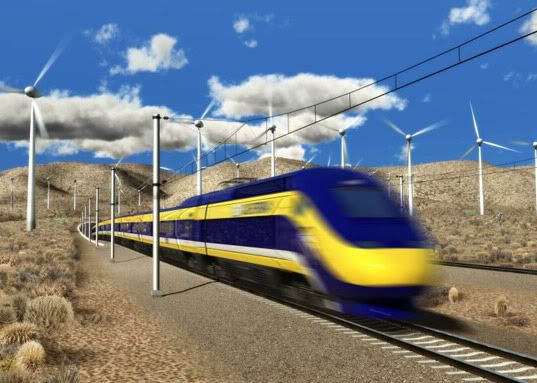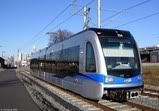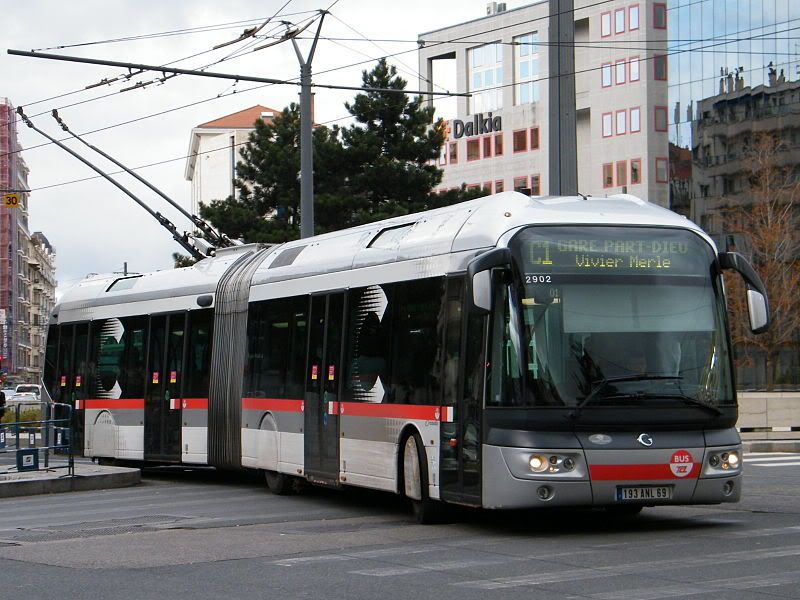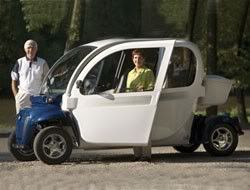(2 pm. – promoted by ek hornbeck)
Burning the Midnight Oil for Living Energy Independence
crossposted from Voices on the Square
 So, you’ve got Plan A. And in case something goes awry with Plan A, you’ve got your fallback plan, Plan B.
So, you’ve got Plan A. And in case something goes awry with Plan A, you’ve got your fallback plan, Plan B.
But what is the fit really hits the shan? What if all the assumptions that lie behind your planning turn out to be false. Things are far worse than ever contemplated in Plan A and Plan B? That’s when you turn to your Plan C, your Plan in case of Complete Catastrophe. In the event of a complete catastrophe, all of the polite fictions of the normal planning process go out the window. Which also means that Plan C is quite often the answer to, “Oh, now what do we do?, and the answer is, “Come up with something that will work ”
So, we have a crisis. A serious crisis, affecting our current transport system, which means a crisis that at the very least interferes with our supply of gasoline. But we have the Petroleum Reserve, so … assume its not a temporary emergency, but a crisis that threatens to last for years. Whether the Crisis hits next year or next decade, well, I don’t know that, do I? But suppose that its coming sometime in the next decade.
What would we face in coming up with something that will work?
The Rail Elements of Plan C
 Last time the United States faced something like a national Transport Plan C was World War II. And in World War II, for Plan C, we had a pronounced tilt to our Plan C toward rail:
Last time the United States faced something like a national Transport Plan C was World War II. And in World War II, for Plan C, we had a pronounced tilt to our Plan C toward rail:
Railroad traffic increased as the armed forces rebuilt. A freight car shortage occurred in late 1939 for the first time since 1921, and the railroads worked steadily to put long-dormant cars and locomotives back in service. Determined to avoid the chaos that resulted from government seizure during World War I, an Office of Defense Transportation was created to exercise general control over the railroads and ensure that national transportation priorities were met.
World War II would prove to be the zenith of public rail transportation. More people and materials than ever before had to travel, and nearly everything moved by rail. Demand increased spectacularly. In 1940, steam railroads handled 378,343 million ton-miles: about 62 percent of all freight. This nearly doubled by 1944 to 745,829 ton-miles, representing 70 percent of all freight transported in the United States. Passenger miles increased at an even greater rate during the same period, from 23,816 million passenger miles to 95,663 million passenger miles. In 1944, the peak war year, more than 75 percent of all commercial passengers traveled by rail, as did an astonishing 97 percent of military passengers.
The reason, of course, was material efficiency. Moving passengers and freight long distances by rail rather than car, bus and truck saved petroleum and rubber for the war effort. Similar material efficiencies are likely to apply to the use of any available rail transport capacity in any future “Plan C” scenario.
If we have little advance warning or, more likely, ample advance warning which is ignored in service of some alliance of vested interests, that would point to first allocating diesel fuel that we have to making most effective use of our rail network, and then applying the balance to competing truck, bus and automobile users by priority. If we have ample advance warning, and if vested interested do not succeed in blinding the nation to the warning, we would immediately begin the process of electrifying the mainline rail corridors to gain the even greater material efficiencies of electric rail transport.
 In a Plan C scenario, we will have whatever Express HSR corridors we have got around to building, and they will see a dramatic increase in use. We might, indeed, run them under an energy efficient speed profile rather than a speed profile competing for patronage against car and air travel competition, since in a serious Crisis scenario, there will be limits on ability to travel by car and air.
In a Plan C scenario, we will have whatever Express HSR corridors we have got around to building, and they will see a dramatic increase in use. We might, indeed, run them under an energy efficient speed profile rather than a speed profile competing for patronage against car and air travel competition, since in a serious Crisis scenario, there will be limits on ability to travel by car and air.
The timelines of planning and building new Express HSR corridors would seem to make it unlikely that we will be launching a major new Express HSR building program in the middle of a major Crisis. So we will be regretting whatever Express HSR corridor that we planned to build but where derailed by the vested interests of Big Oil and the politically engaged road-building industry, but by the time the Crisis hits, it will be too late to do more about it than shake our heads and wonder, “just what were they thinking?”
 On the other hand, in a Crisis situation we could do quite a lot to expand the capacity of the existing rail system. After all, the addition of a few miles long passing track section to each fifty miles of single-track is a substantial increase in capacity. You can go incrementally from 2:50 to 10:50 to 25:50 to double track, gaining substantial capacity increases at each stage along the way. So a coordinated effort of a few years could provide substantially expanded freight and passenger capacity in our conventional rail network, if required.
On the other hand, in a Crisis situation we could do quite a lot to expand the capacity of the existing rail system. After all, the addition of a few miles long passing track section to each fifty miles of single-track is a substantial increase in capacity. You can go incrementally from 2:50 to 10:50 to 25:50 to double track, gaining substantial capacity increases at each stage along the way. So a coordinated effort of a few years could provide substantially expanded freight and passenger capacity in our conventional rail network, if required.
So, the rail elements of Plan C is a nationally coordinated plan to shift passengers and freight from air, cars buses and trucks to rail, to identify capacity bottlenecks that can be eliminated in a couple of years work, and to make full use of whatever Express HSR infrastructure we’ve been lucky enough to get completed by that point in time.
Obviously, if the crisis lasts long enough, people will start to look to the expansive and materially-inefficient expressway system and consider whether there is a more efficiency use that can be made of all of those overpasses and underpasses.
The Bus Elements of Plan C
 If we are free to waste as much gasoline as we presently do by relying on gasoline powered automobiles for local, regional and intercity passenger transport, then with respect to transport, its not really a Crisis, is it? The question that will dominate planning on coping with the crisis will be how to maintain transport when over half of the current annual automobile vehicle miles are no longer permitted to be driven.
If we are free to waste as much gasoline as we presently do by relying on gasoline powered automobiles for local, regional and intercity passenger transport, then with respect to transport, its not really a Crisis, is it? The question that will dominate planning on coping with the crisis will be how to maintain transport when over half of the current annual automobile vehicle miles are no longer permitted to be driven.
There will be some element of ride sharing, of course. With an average occupancy of under 1.6 passengers per vehicle, and average available seats over 4 (a load factor below 40%), heavy reliance on ride sharing will allow us to make maximum use of the automobile trips that are allowed.
There will also be some share of electric automobile use. A wholesale replacement of gasoline for electric automobiles is, however, a gross material waste during crisis conditions, since automobiles spend so much of their day idle. Far better to devote those resources to the construction of electric buses, which can be kept in use for a much longer service day.
Given the range of transport tasks to be undertaken, there will be a range of buses to meet the need. Under Crisis Conditions, trolleybuses are an existing mature technology that will be a compelling. For school bus routes, and for more flexible shuttle buses to provide book-a-ride services, pluggable hybrid electric vehicles would attempt to run as much of their route as possible on electric power and as little as possible on liquid fuel, and would be competing for selection against battery trolleybuses relying on no-contact power sources or intermittent trolleywire power sources.
Local Individual Transport in Plan C
 Bicycles will be the backbone of individual transport in the early stages of a Crisis Scenario that upsets all of our thinking in transport. Indeed, in taking a large share of the automobiles off the road, a serious Crisis scenario almost instantly removes the single largest real and imagined impediment to heavy transport cycling use, which is the dangers actually posed by the vary large numbers of motorists who are grossly unskilled, negligent, and totally ignorant of their responsibility to share the public right of way with road users other than cars, and then the threat that is imagined to be coming from all motorists, since once cannot, after all, tell whether or not that car approaching your from ahead or behind contains one of the tens of millions of Americans who have no credible claim to a right to carry a driver’s license.
Bicycles will be the backbone of individual transport in the early stages of a Crisis Scenario that upsets all of our thinking in transport. Indeed, in taking a large share of the automobiles off the road, a serious Crisis scenario almost instantly removes the single largest real and imagined impediment to heavy transport cycling use, which is the dangers actually posed by the vary large numbers of motorists who are grossly unskilled, negligent, and totally ignorant of their responsibility to share the public right of way with road users other than cars, and then the threat that is imagined to be coming from all motorists, since once cannot, after all, tell whether or not that car approaching your from ahead or behind contains one of the tens of millions of Americans who have no credible claim to a right to carry a driver’s license.
Indeed, even in our outer suburban areas, where there may be nothing within convenient access by bike, the newly established bus routes are likely to be fairly widely separated, and for many people in outer suburban areas, the start of their trip to anywhere could well be a bike ride to the closest bus route. As the crisis wears on, there will be households along the bus route who organize some form of goods and package delivery and convert their garage into a corner store … and when that happens, there will be somewhere to cycle that is within convenient access by bike.
The range and convenience of bikes can be extended by adding supplementary electric motors. This is particularly useful in hillier terrain, and for destinations that are in easy reach of a sports cyclist on a training ride but beyond the range of an everyday transport cyclist.
 However, there are a range of other individual transport options that are viable to rely upon in a Crisis Scenario. There are neighborhood electric vehicles, which are far less cheaper to build than freeway-capable electric cars, and so offer an option for those who are not physically capable of cycling. There are a range of 100mpg+ two seater vehicles under development, many of them freeway capable. Indeed, the same characteristics that make them very fuel efficient would also give electric versions substantially greater all-electric ranges than a conventional American sedan.
However, there are a range of other individual transport options that are viable to rely upon in a Crisis Scenario. There are neighborhood electric vehicles, which are far less cheaper to build than freeway-capable electric cars, and so offer an option for those who are not physically capable of cycling. There are a range of 100mpg+ two seater vehicles under development, many of them freeway capable. Indeed, the same characteristics that make them very fuel efficient would also give electric versions substantially greater all-electric ranges than a conventional American sedan.
Neighborhood electric vehicles are presently limited to streets with a speed limit of 35mph or less. It would be possible to identify a road network that gives access to local destinations, and to bus and rail connections further afield. With fewer cars in the road in the crisis, there would be less opposition and more support for converting the roads in that network to 35mph.
Plan C Regrets
Having Express HSR corridors will be a substantial benefit during the Crisis Scenario, with their all-electric trains and very energy efficient routes that are the side-effect of engineering to support high speed rail. However, as I’ve already mentioned, their long planning and construction horizon implies that we are unlikely to respond to the Crisis Scenario by setting out to build new Express HSR corridors. At best we would be able to accelerate the completion of projects that are already underway.
This is far from the only, let alone the most important, of these “Plan C Regrets”, things that we ought to have built, and in Plan C conditions wished that we had built, but are unlikely to be able to build under Plan C conditions.
Regulatory barriers to providing effective passenger rail transport on freight rail corridors might fall away under Plan C conditions. And some upgrades to capacity will be possible. But the big ticket local passenger rail investments seem likely to be a “Plan C Regret”. So, for example, we are likely to have to accept most of the big passenger rail access bottlenecks into our big cities that we presently have … unless we end up fixing them between now and when the Crisis Hits.
All of the downtowns that fell into the “streetcar fad” will, of course, be very happy that they did, but in Crisis Conditions, it does not seem likely that we will be building many more. Under Crisis Conditions, we will be more likely to be busing people to the infrastructure that we were lucky enough to have got completed before the Crisis hit.
The Steel Interstate is a sufficiently big payoff, and paying off in increments as it is built under Crisis conditions, so it is plausible that it would go ahead under Crisis Conditions. However, those who ride in the Crisis-era long distance passenger train capacity, built in a standard container profile to be carried on equipment designed to carry freight containers, will regret that they didn’t get to ride in the pre-Crisis era long distance passenger rail equipment.
Conclusions
So, how will you be getting around if the fit hits the shan? And if the “Transport Crisis Scenario” does hit, what will be your “Plan C Regrets”?
Midnight Oil ~ The Dead Heart

1 comments
Author
… but this train don’t carry no gamblers. And definitely no Heritage Foundation transport “advocates” (under the carry no liars clause).